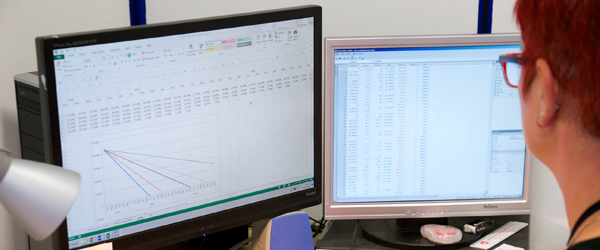Linkage to routine health and social records

ALSPAC is able to link participants’ self-reported data with external data sources to further strengthen the resource and enable life-changing research. Many of these linkages are in place and the data are readily available for use; others are in development, or the data are available but require bespoke access arrangements. UK-based researchers can apply to use linked data as part of a project proposal submitted to ALSPAC.
Please contact the linkage team (alspac-linkage@bristol.ac.uk) if you are interested in the existing data (outlined below), developing new linkages, linkage methodologies or collaborative projects.
Existing linkage data
The national datasets currently linked to ALSPAC participants are listed below. The linkage team also has access to some smaller, regional datasets which are listed in the ALSPAC_guide_to_accessing_linked_records (PDF, 392kB). Currently, unless stated otherwise, linked datasets are available only for the index children (G1).
| Datasets currently linked to ALSPAC participants | ||||
| Source Data | Data coverage | Approx. sample size | Further details | |
| Years | Age | |||
| Primary Care (GP records) |
1990 – 2016 |
0 – 25 | 12,000 | |
| Hospital Episode Statistics (HES) |
1990 – 2017 |
0 – 27 | 11,000 | Information from NHS Digital |
|
STORK database(midwifery records for G0 and delivery records for G1) |
1990 – 1992 | Various |
4690 (G1s and their mothers) |
Wellcome Open Research data note |
| Mental Health Service Data Set (MHSDS) | 2006 – 2015 | 16 – 25 | 800 | Information from NHS Digital |
| National Pupil Database (NPD) Key Stage (1-5) |
1995 – 2011 | 5 – 18 | 13,000 | Information from Department for Education |
| School absences & exclusions | 2006 – 2009 | 15 – 16 | 11,000 | Information from Department for Education |
| Annual School Census | 1999 – 2009 | 8 – 18 | 20,000 schools | Information from Department for Education |
| Crime data (Avon & Somerset Police) | 2007 – 2021 | 15-31 | 1,750 | Wellcome Open Research data note |
We can also able to link participant level data to that associated with their geographic location across the lifecourse. Linkages can be established to co-ordinates or to health, political and administrative geographies. In turn we can link participants to neighbourhood data such as pollution and biodiversity.
The ALSPAC data linkage team have extensive experience of negotiating access and undertaking linkage to data sets that are either non-routine or are not routinely centralised. To discuss these possibilities please get in touch with the linkage team: alspac-linkage@bristol.ac.uk.
1. The Project to Enhance ALSPAC through Record Linkage (PEARL).
Funded by the Wellcome Trust (£1.8m 2009-2018, led by John Macleod).
This (original) project secured the legal basis for, and subsequently extracted ALSPAC index participants’ health and social administrative records. The award also supported the development of ALSPAC's linkage governance structure (including the ISO27001 accredited PEARL Data Safe Haven and access to the UK Secure eResearch Platform).
2. Enhancing Environmental data Resources in Cohort Studies: ALSPAC exemplar (ERICA).
Funded by the Natural Environment Research Council (NERC) and Medical Research Council (MRC), (~£100k, 2017-2018, led by Andy Boyd).
ERICA aimed to establish generalisable mechanisms for linking natural environment records into longitudinal population databanks established by cohort studies. With our partners at the Small Area Health Statistics Unit (SAHSU, Imperial University) and the Earth Observation Science Group (Leicester University) we scoped data science and governance issues relating to linking spatial data. We also conducted an exemplar study evaluating the association of in utero and early life exposure to nitrogen dioxide (NO2) and subsequent health outcomes.
3. Cohort & Longitudinal Studies Enhancement Resources (CLOSER).
Funded by the Economic and Social Research Council (ESRC) and Medical Research Council (MRC), ( 2012-2017, linkage work packages led by Andy Boyd).
CLOSER aims to maximise the use, value and impact of cohort and longitudinal studies. The work packages are 1) developing novel mechanisms for disclosure control in cohort and longitudinal data sets; 2) facilitating new linkage mechanisms through coordinated communications with data owners; and, 3) developing harmonised standards for processing NHS Hospital Episode Statistics records.
We are working to expand our coverage of the health and education records to include the parents of the Children of the 90s and, ultimately, to link to a third generation. Health data linkages are being developed with NHS Wales and the Avon & Wiltshire Mental Health Partnership NHS Trust.
Work is also in progress to access ALSPAC participants’ employment, benefits and earning records from the Department for Work and Pensions, and their interactions with the justice system from the Ministry of Justice.
